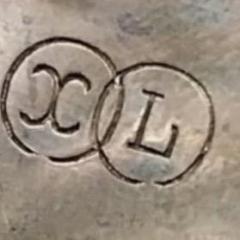-
Recently Browsing
- No registered users viewing this page.
-
Topics
-
Posts
-
I didn't mean that literally but you could of course not know that. I was thinking of Jerry Seinfeld who recently said: "The secret of life is to waste time in ways that you like". If true, it is shameful considering the price. I do not think it is true. On the contrary, I think they are using Sellita's premium grade but it would be interesting to have it confirmed or denied by a reliable source. So do I 😍
-
The easiest way to tell what grade the movement is by inspecting it with special reference to the balance. Standard and elabore as a pair share the same balance which has different shaped spokes compared to the ones used in top and chronometer. It could be standard, elabore or top, unlikely to be chronometer grade as that is often marked on the dial. Tom
-
By nickelsilver · Posted
Ha, like OH I have 4; just weighed my most used one and it's 30 grams with the (lightweight) handle, so right at 1 ounce. There's a smaller one, and two larger. Again like OH the biggest one gets used for clock work and comes in at 55g. -
Hi I’m quite new to the clock hobby with a lot to learn. Wondering whether anyone has clue as to the age and make of this mantel clock - whether it is unusual for this age (circa 1900?) to have a platform escapement? ..and whether there is anything about that escapement that helps to ID the make or manufacture date? thanks, Rupert
-
Hello friends, connected to some questions I raised in a thread about JLC cal 916 (see here: https://www.watchrepairtalk.com/topic/29824-jaeger-lecoultre-calibre-916-memovox/?do=findComment&comment=253043), I'm starting this topic about Moebius Lubeta V106 for oscillating weight ball bearings -- not to be confused with V105 for reversing wheels. Does anyone know more? As in, what it consists of? I'm asking because Lubeta V105 can be "recreated" by mixing benzine and 9010. (image credit @mikepilk) I wonder if Lubeta V106 is also a basic mix like that.... and stumbled on the service guide for the JLC calibre 918. Interestingly, the "create" an immersion lubricant with benzine and D5 oil. Could this be what V106 is??
-





.thumb.jpg.cb17a66989f1e796fd4217db2e9ca9df.jpg)


Recommended Posts